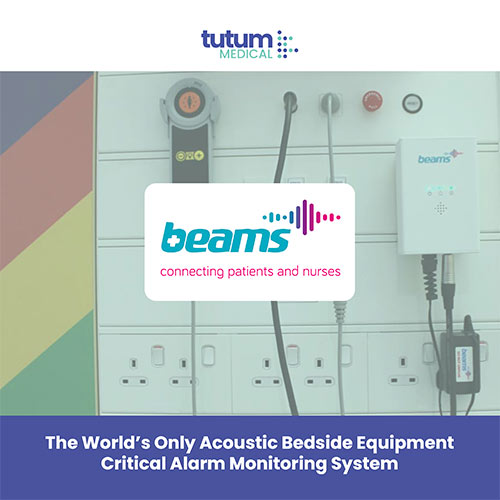
Electronic Patient Records (EPRs) are an intrinsic part of modern healthcare but also pose unique risks and vulnerabilities for data security due to the sensitivity of the data that they hold. Patient data security is now an essential component of contemporary healthcare, and the monitoring systems we employ can significantly influence this. As healthcare institutions increasingly adopt digital methods, understanding the potential risks with integrated central monitoring systems becomes crucial, especially when they manage bedside equipment device alarms. In this article, we’ll explore the security concerns these systems may pose and contrast them with the inherently secure design of BEAMS.
Integrated Central Monitoring: Systems that intertwine directly with Electronic Patient Records (EPRs) and other hospital IT systems inherently carry a risk of data breaches. As cyber-attacks on healthcare systems grow, a compromise in one system can imperil the security of interconnected platforms. Before implementing a new monitoring system in the NHS a Data Protection Impact Assessment needs to be considered, and if the system integrates in any way with NHS IT systems, will need completion. This comprehensive document means that every consideration must be taken before installing.
BEAMS Acoustic System: Operating without any interface with EPRs or hospital IT setups, BEAMS stands out with its significantly diminished risk of data breaches. Importantly, BEAMS doesn’t hold any patient-specific or staff data – all information pertains purely to devices and their locations, ensuring patient and staff confidentiality.
Integrated Central Monitoring: The intricate nature of central systems integrating multiple devices can lead to an assortment of security protocols. Bedside medical devices can be many and varied, with each integration offering a risk of hacking and data breaches. Each device connection can become a vulnerability if not appropriately safeguarded.
BEAMS Acoustic System: Designed for simplicity and device-agnostic operation, BEAMS utilises its own WiFi mesh, removing the complications and potential vulnerabilities of extensive integrations.
Integrated Central Monitoring: Heavily integrated systems necessitate continual updates to ensure security across all components. An overlooked update on a single device can threaten the system’s overall integrity.
BEAMS Acoustic System: BEAMS operates independently, eliminating the continuous demand for holistic system updates, resulting in more dependable and consistent security.
While the search for efficient medical device alarm monitoring continues, data security must remain at the forefront. Integrated central systems, despite their features, can come with vulnerabilities. In contrast, BEAMS, with its independent, patient-data-free, and device-agnostic approach, emerges as clearly superior for institutions prioritising both effective alarm monitoring and uncompromised data security.
If you’d like to know more about BEAMS, please feel free to contact us. We’d be happy to help.